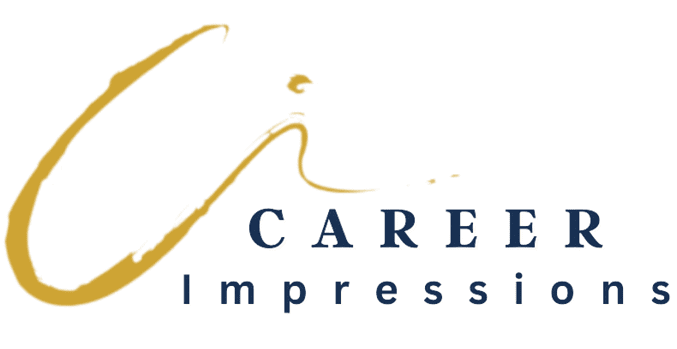
Sell Your Impact, Not Your Age
Ever come across a LinkedIn About section or executive resume summary that kicks off with something like:
“Seasoned executive with 25+ years of experience…”?
If you’ve been in the workforce for a while, that might feel like a logical way to begin. After all, you’ve worked hard, gained wisdom, and built a long track record of success. You want to showcase that.
I see it all the time, and I get it. Experience does matter.
But here’s the truth: that opener isn’t helping you stand out.
Why “Seasoned” Falls Flat
Let’s break it down. Why doesn’t “seasoned” land the way you hope?
It’s vague.
“Seasoned” could mean anything. It doesn’t tell the reader what you’re good at, how you’ve applied your expertise, or what results you’ve delivered.
It’s overused.
Recruiters and hiring managers see this term in hundreds of resumes. It’s become a filler word—one that gets skimmed over without making an impression.
It focuses on time, not value.
“25+ years of experience” tells me how long you’ve been in the game, not how well you’ve played. And that’s what employers care about—results, impact, and relevance.
Instead of saying:
Seasoned IT executive with over 25 years of experience in technology strategy.
Try:
Technology executive who led $100M digital transformation projects, reduced infrastructure costs by 40%, and built global IT teams across 3 continents.
See the difference? One tells you how long they’ve worked. The other shows what they’ve done—and why it matters.
The Hidden Risk: Unintentional Age Bias
Let’s address the elephant in the room.
Words like “seasoned” or phrases like “25+ years of experience” can unintentionally trigger age bias in hiring.
Is it fair? Absolutely not.
Is it real? Unfortunately, yes.
Bias happens, often subconsciously. Hiring managers may assume you’re “too experienced” for the role, out of touch with current trends, or too expensive. That’s why leading with years instead of value can backfire.
But here’s the good news: You can control how you frame your experience. And framing it around impact puts you in a much stronger position.
Focus on Recent, Relevant Wins
Your opening summary—whether on LinkedIn or your resume—is precious real estate. Don’t waste it on generic descriptors. Use it to communicate your value clearly and concisely.
Highlight:
-
What you’ve achieved recently
-
The business problems you solve
-
How you help teams, customers, or companies thrive
Instead of:
Seasoned HR leader with 30 years in talent development.
Try:
Strategic HR partner who built DEI programs adopted across 12 global offices, improved retention by 25%, and scaled onboarding during a 400% growth period.
The number of years fades in importance when your impact takes center stage.
Make It Specific, Measurable, and Modern
The most powerful career summaries are specific and aligned to your target roles. Use numbers, outcomes, and action.
Formula to try:
[Title or expertise] who [action verb] [result/impact] by [method/approach].
Examples:
-
“Operations executive who streamlined logistics and cut delivery times 35% using AI-powered route planning.”
-
“Marketing strategist who grew organic traffic 5x and launched 20+ lead gen campaigns generating a $10M+ pipeline.”
These measurable and metric-driven statements show that you’re not just experienced—you’re effective, current, and results-driven.
Update Your Language and Lean into Your Strengths
Modernizing your language doesn’t mean hiding your experience but strategically positioning it.
Here’s how to shift your messaging:
Instead of… Try…
Seasoned Leader Descriptive word + exact job title [Transformative Chief Operating Officer]
25+ years of experience Emphasizing value/outcome: Delivered 20% YOY growth for past 3 years
Responsible for Using active voice and action words: led, launched, delivered, built, created
Worked on Taking ownership: spearheaded, implemented, directed, orchestrated
Tip: If you’re concerned about appearing overqualified, emphasize your adaptability, mentorship, or desire to contribute at scale—rather than just your tenure.
What About the Rest of the Resume?
Of course, your executive resume still needs to show the full arc of your career. Just don’t lead with time; lead with value.
-
Focus on the last 10–15 years of experience
-
Group earlier roles under “Additional Experience” if they’re less relevant
-
Use formatting to de-emphasize dates and emphasize achievements
Bonus tip: Use a “Core Highlights” or “Career Snapshot” section at the top of your resume to quickly showcase 4–6 top achievements across your career.
When in Doubt, Tell a Story
Your career isn’t just a list of dates – it’s a narrative. Tell that story in a way that aligns with where you want to go.
Example summary:
Growth-focused commercial leader who scaled SaaS companies from startup to $100M+ in ARR. Known for building high-performing sales teams, launching new markets, and driving revenue growth of $250M+ over 2 years while mentoring future leaders.
This summary tells us:
✅ Who you are and what you do
✅ What makes you successful
✅ Where you add value today
✅ That you’re still growing—and helping others grow, too
Your Experience Is Valuable. Show Why
There’s no need to downplay your experience—it’s an asset—but how you frame it in your executive career tools makes all the difference.
So ditch the vague, dated intros and avoid leading with “seasoned” or “25+ years of experience” in your resume or LinkedIn profile.
Instead, lead with clarity, impact, and relevance.
Speak the language of results, not resume clichés.
Show them what you can do now—and what you’ll do for them next.
Sell your impact, not your age.
